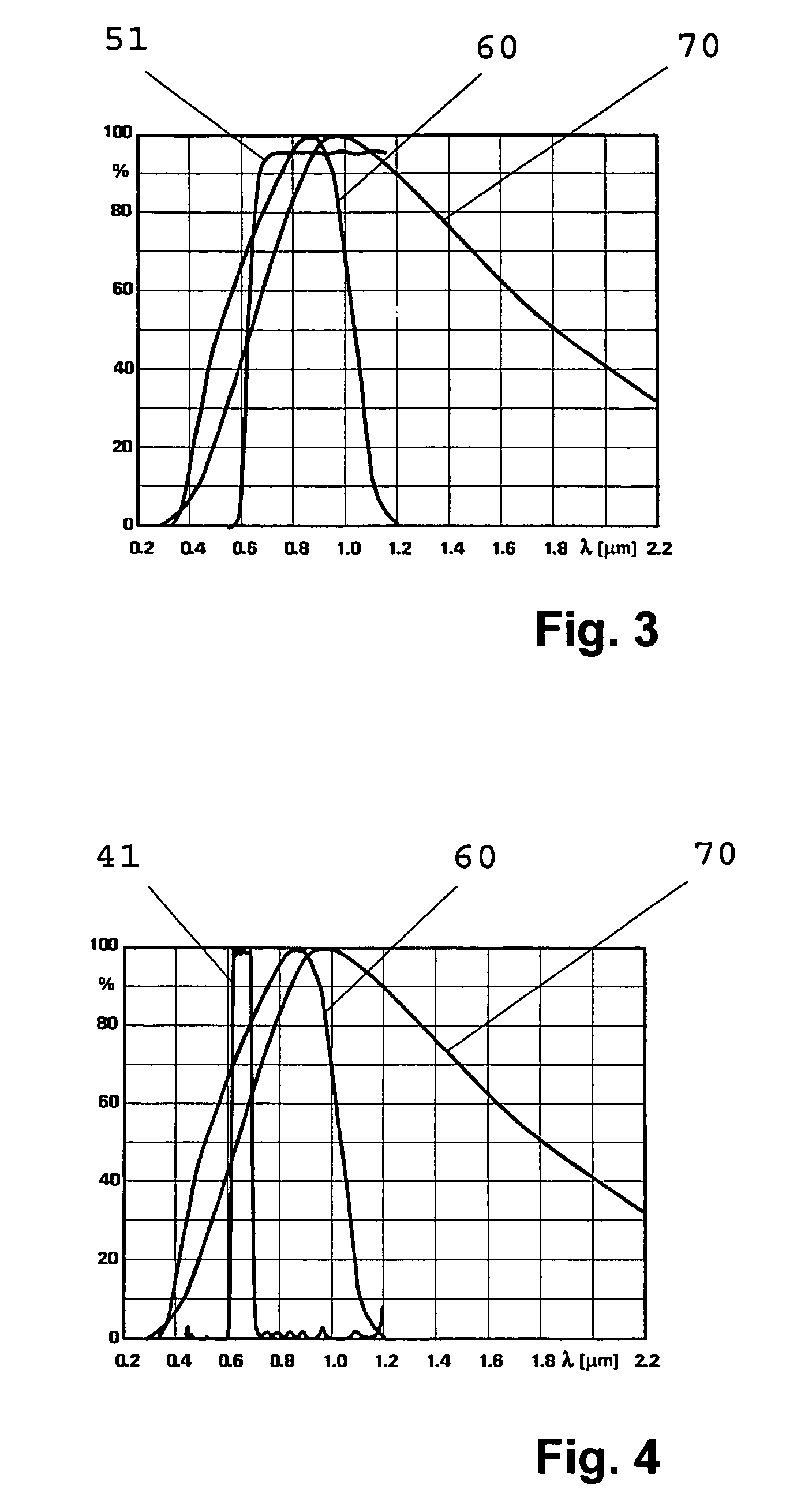Low noise light receiver
a low-noise light and receiver technology, applied in the direction of instruments, counting objects on conveyors, satellite communication transmission, etc., can solve the problems of poor signal to noise ratio, large bandwidth and intensity of received light, etc., and achieve the effect of improving the signal to noise ratio
- Summary
- Abstract
- Description
- Claims
- Application Information
AI Technical Summary
Benefits of technology
Problems solved by technology
Method used
Image
Examples
Embodiment Construction
[0021]FIG. 1 shows a commonly used arrangement of photodiode 10 and amplifier 20. Photodiode 10 is connected to the inverting input 21 of amplifier 20 and via load resistor 15′ to output 23 of amplifier 20. The voltage Vout measured at output 23 is essentially proportional to the current generated by photodiode 10 when it receives the light signals emitted by a light source 9. Thus, the assembly of FIG. 1 acts as a current-voltage converter.
[0022]The principal noise sources of the assembly according to FIG. 1 are photodiode 10 and load resistor 15′. On the other hand, the noise produced by amplifier 20 is negligible in the intense ambient light that may be present in sensory applications. Due to thermal noise, load resistor 15′ produces a noise current that represents the major part of the overall noise. Now, a fundamental disadvantage of the assembly according to FIG. 1 is that load resistor 15′ must be dimensioned such that a saturation of amplifier 20 is excluded even if intense ...
PUM
 Login to View More
Login to View More Abstract
Description
Claims
Application Information
 Login to View More
Login to View More - R&D
- Intellectual Property
- Life Sciences
- Materials
- Tech Scout
- Unparalleled Data Quality
- Higher Quality Content
- 60% Fewer Hallucinations
Browse by: Latest US Patents, China's latest patents, Technical Efficacy Thesaurus, Application Domain, Technology Topic, Popular Technical Reports.
© 2025 PatSnap. All rights reserved.Legal|Privacy policy|Modern Slavery Act Transparency Statement|Sitemap|About US| Contact US: help@patsnap.com



